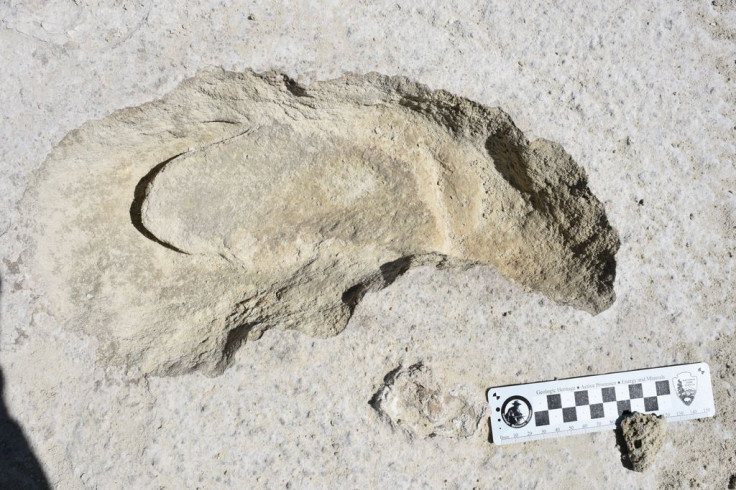Humans Chased, Hunted Ancient Giant Sloths During Ice Age, Fossil Footprints Suggest
A new study exploring fossilized footprints from the last Ice Age suggests our ancestors stalked and followed giant ground sloths, massive razor-clawed animals, in a bid to hunt them down.
The prints, discovered at the White Sands National Monument, New Mexico, are at least 11,000 years old — just around the time ground sloths went extinct, as per fossil records. However, what’s interesting is the fact that many of the stretched, kidney-shaped marks also held human footprints, also belonging to the same timeline.
Though there could be many explanations for this, including adolescent inquisitiveness, the best possible theory indicates our ancestors pursued the giant animal as prey and followed it purposely using the footprints it left behind.
This is because the group spotted some weird footprint patterns at the site. “We see interesting circles of sloth tracks in these stalked trackways which we call ‘flailing circles,’” Matthew Bennett, a member of the team that discovered the prints 10 years ago, said in a statement. “These record the rise of the sloth on its hind legs and the swing of its forelegs presumably in a defensive motion.”
According to the researchers, the animal, standing seven to eight feet tall on its hind legs, swung its densely muscled forelimbs in a bid to fend off the approaching hunter. That would have been enough to tear down the hunter, but the group not only spotted human prints inside giant sloth prints but also at a safe distance from it.
“We also see human tracks on tip toes approach these circles; was this someone approaching with stealth to deliver a killer blow while the sloth was being distracted? We believe so,” Bennett added. In addition, several prints of children and assembled crowds were also even seen at the site.
This suggests early humans might have worked in groups to track, overpower and hunt down the giant animal. Hordes of people and a hunter stalking from behind would have distracted the animal, while the one creeping stealthily might have delivered the killing blow just when it turned.

The discovery indicates a crucial piece of history, a story revealing the interaction between humans and megafauna. The White Sands National Monument holds many similar prints, belonging to ancient, long-extinct giants such as mammoths and big cats.
That said, the group now plans to conduct further studies to uncover more evidence of similar interactions. The task is considered difficult as fossilized prints weather away quickly in different atmospheric conditions and are hard to spot. They also plan to delve into the giant sloth story to understand when exactly in history the tracking and hunting episode took place.
The research on the prints titled “Footprints preserve terminal Pleistocene hunt? Human-sloth interactions in North America” was published April 25 in the journal Science Advances.
© Copyright IBTimes 2024. All rights reserved.











